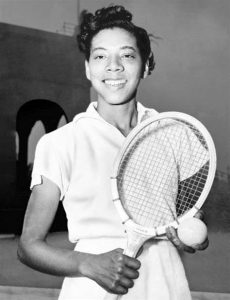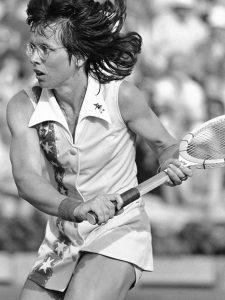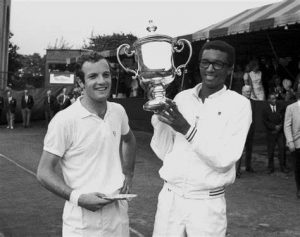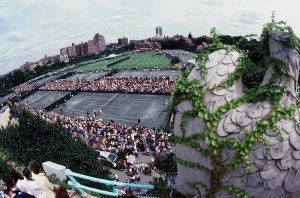When you think of the US Open history, many legendary moments come to mind. You have the Williams sisters’ faceoff in the women’s finals, Roger Federer’s championship streak, and Naomi Osaka overcoming Serena Williams. With 16 qualifying rounds as opposed to the usual 12, the US Open has a reputation for being one of, if not the toughest tournaments on the tour. Equally as fascinating as recent events are the tournament’s legacy. It’s time to take a journey back in time.
Pre-Open Era
In 1881, the event began as the US National Singles Championships for Men. At the time, the United States National Lawn Tennis Association permitted only its members to play in the tournament. And of course, the tournament was exclusive to men. Six years later, the first Women’s National Singles Championship was held separately. These tournaments also excluded professional players from participating, limiting competition to amateur players.

Initially, these events were held across different states until players petitioned to move them to New York to attract more fans. This process began in 1915 when the men’s singles tournament was held in the West Side Tennis club at Forest Hills, in New York City. In 1924, the International Lawn Tennis Federation officially recognized the U.S. National Singles Championship as one of the world’s major tournaments.


Legendary player Althea Gibson debuted at Forest Hills in 1950. She broke the color barrier as the first African American to play in the US National Singles Championships. Later in 1959, eventual WTA founder Billie Jean King made her Grand Slam debut at the championships. These athletes paved the way for equality in tennis: both leading the way for women in general and Gibson for athletes of color in particular.
Open Era
Starting in 1968, the major tournaments allowed professional players to join the competition. To commemorate this new “Open Era,” the US National Singles Championshipped rebranded its name to the U.S. Open. African American player Arthur Ashe won the inaugural US Open, but he had to decline the $14,000 prize to maintain amateur status. Instead, he settled for $20 in daily expenses to maintain eligibility for the upcoming Davis Cup. At the time, the Davis Cup still forbade pro players from participating, a policy that wouldn’t change until 1973. Coincidentally, this was also the year that the US Open became the first major tournament to offer women prize money equal to what men earned.

Modern times
The US Open is truly a pioneer in modernizing tennis. Whenever new technology emerged, the US Open quickly adopted it. Starting in 1975, organizers took steps to improve the televised viewing experience. For the sake of viewers at home, the West Side Tennis Club installed lights and changed its court surface. With new opportunities at hand, the US Open became the first major tournament to host matches at night.

With the growing popularity of women’s tennis, schedules shifted to take advantage of the new trends. For the first time, in 2001, women’s tennis premiered on prime-time network television. That fateful Saturday night, sisters Serena and Venus Williams faced off in an iconic grand slam final in front of an audience of millions of home viewers.

Today, the US Open continues to make strides in the face of change. Most recently, the COVID-19 pandemic proved challenging to sporting events across the globe. Yet despite these difficulties, the US Open managed to run amidst uncertainty. While the scheduling played a large part in ensuring the tournament could be played, careful planning and precautions proved decisive for success. Thanks to these efforts the US Open remains the only major tennis tournament to have been played every year since its inception. This year marks an exciting new chapter in the US Open’s history, and there’ll be many more moments to look forward to.
If you you are interested in discovering more about tennis history, be sure to visit us at tennisexpress.com! Check out our selection of collectibles, books, videos, apparel, and more.
For More:





